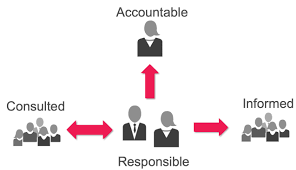Agile teams aim to work efficiently and deliver value quickly. Traditional metrics like velocity only measure the speed of work, but they don’t highlight inefficiencies in the workflow. This is where flow metrics come in. Flow metrics track how work moves through a process, helping teams spot delays and improve productivity.
Three key flow metrics—Flow Efficiency, Cycle Time, and Throughput—help teams understand and optimize their workflow. Using these, Agile teams can work smarter, remove bottlenecks, and improve delivery speed.
What Are Flow Metrics?
Flow metrics measure how smoothly work progresses, revealing hidden delays and inefficiencies. Unlike traditional Agile metrics, which focus on estimated progress, flow metrics provide real-time insights into work completion.
1. Flow Efficiency
Flow efficiency shows how much time is spent actively working on a task versus waiting. It is calculated as:
Flow Efficiency=(Active Work TimeTotal Cycle Time)×100\text{Flow Efficiency} = \left( \frac{\text{Active Work Time}}{\text{Total Cycle Time}} \right) \times 100
A low percentage means too much time is wasted waiting, while a higher number shows a more efficient workflow.
2. Cycle Time
Cycle time measures how long it takes to complete a task from the moment work starts.
Cycle Time=Completion Date−Start Date\text{Cycle Time} = \text{Completion Date} – \text{Start Date}
A shorter cycle time means tasks are completed faster. If cycle time increases, it signals delays in the workflow.
3. Throughput
Throughput measures how many tasks are completed in a given timeframe.
Throughput=Total Work Items Completed in a Given Time Frame\text{Throughput} = \text{Total Work Items Completed in a Given Time Frame}
Consistently high throughput indicates a well-optimized process, while fluctuations may show workflow issues.
Why Flow Metrics Matter in Agile
Traditional Agile metrics don’t always reveal the reasons behind delays. Flow metrics help teams:
- Predict Delivery Times – Cycle time and throughput improve forecasting.
- Find Bottlenecks – Flow efficiency highlights workflow delays.
- Make Better Decisions – Data-driven insights improve task prioritization.
- Deliver Value Faster – Optimized workflows lead to quicker results.
How to Improve Agile Workflows with Flow Metrics
- Track and Visualize Flow Metrics
- Use tools like Kanban boards to monitor efficiency, cycle time, and throughput.
- Identify patterns in work completion rates.
- Reduce Wait Times
- Remove unnecessary delays and improve communication between teams.
- Limit work-in-progress (WIP) to keep tasks flowing smoothly.
- Shorten Cycle Time
- Break large tasks into smaller pieces to complete work faster.
- Automate repetitive steps to reduce manual effort.
- Maintain a Stable Throughput
- Balance workload to prevent overloading teams.
- Adjust priorities based on throughput trends.
- Hold Regular Reviews
- Discuss flow metrics in retrospectives to find areas for improvement.
- Encourage teams to experiment with process changes.
Conclusion
Flow metrics—Flow Efficiency, Cycle Time, and Throughput—help Agile teams work more effectively. By focusing on real-time workflow data instead of just speed, teams can identify and fix inefficiencies, making their processes smoother and more predictable.
By applying these metrics, organizations can build a stronger Agile foundation, improving team performance and delivering value to customers faster.












